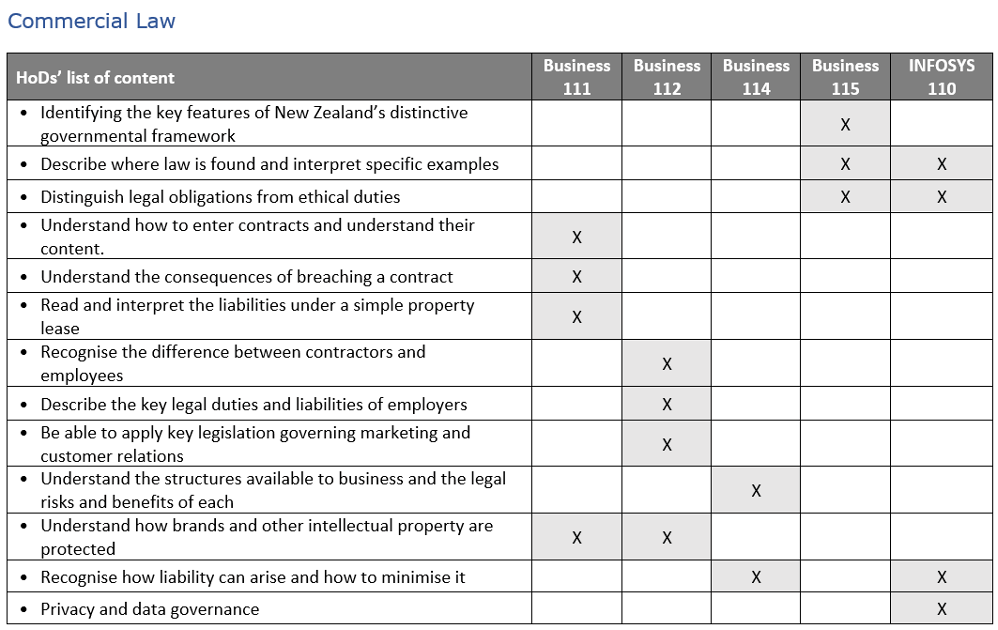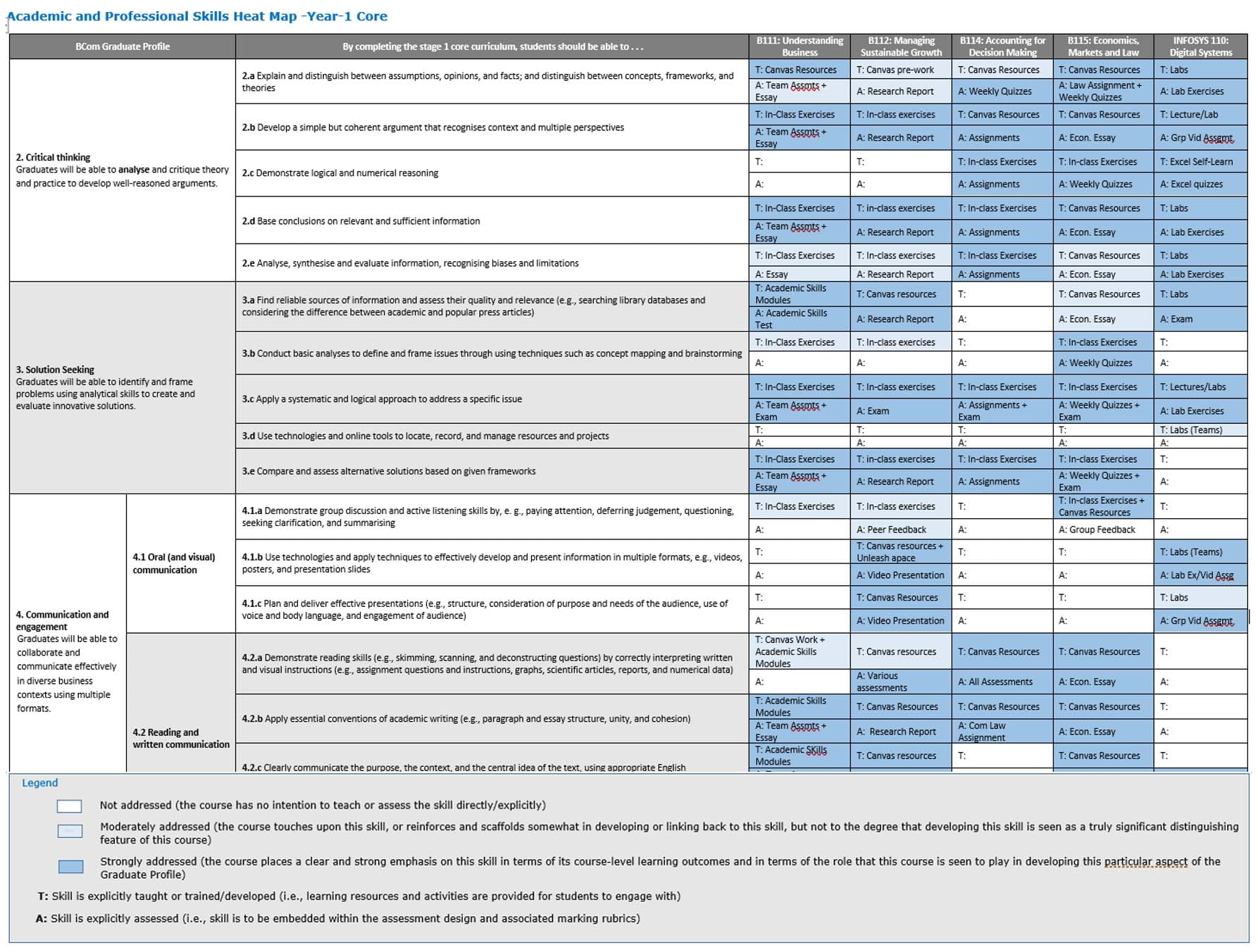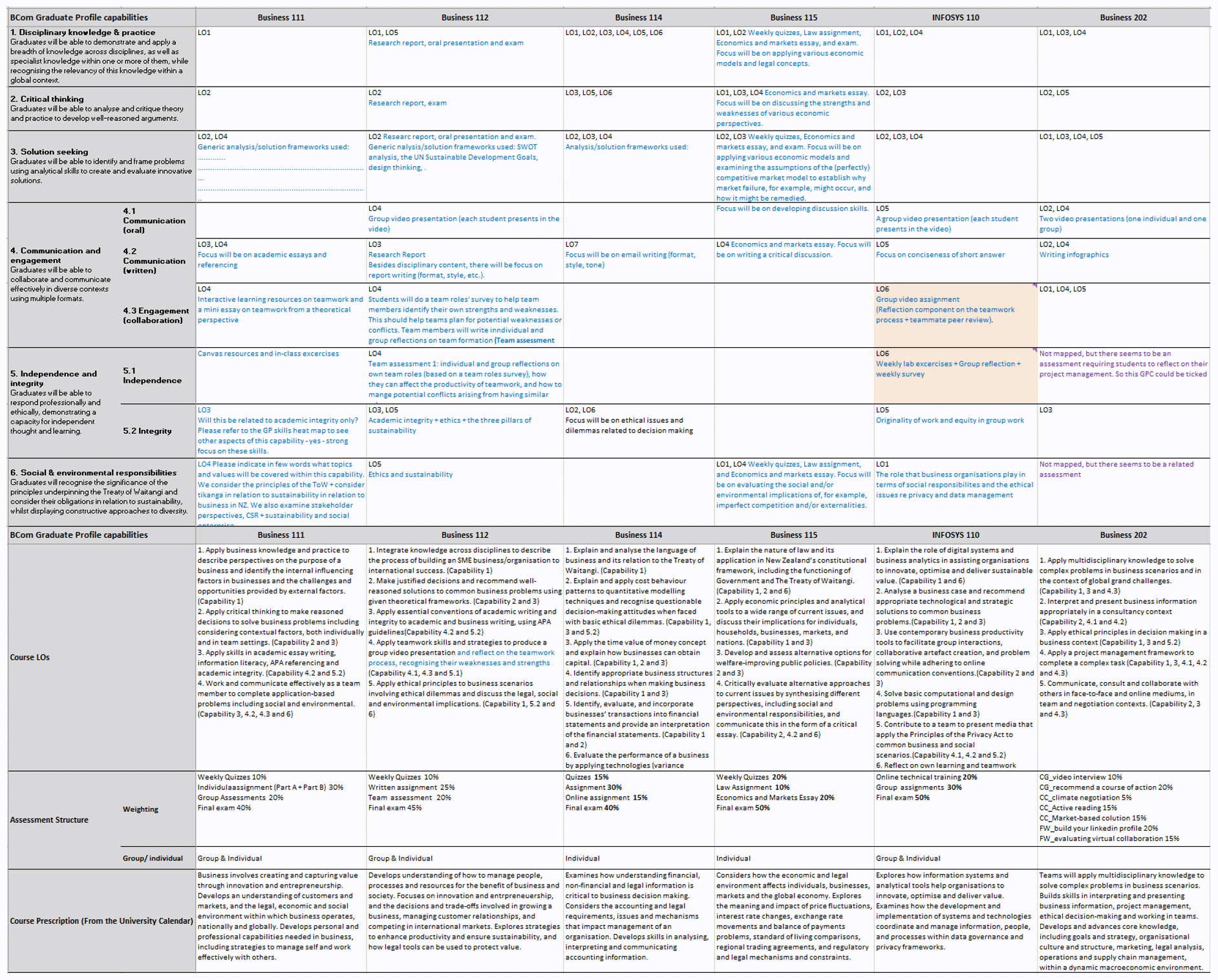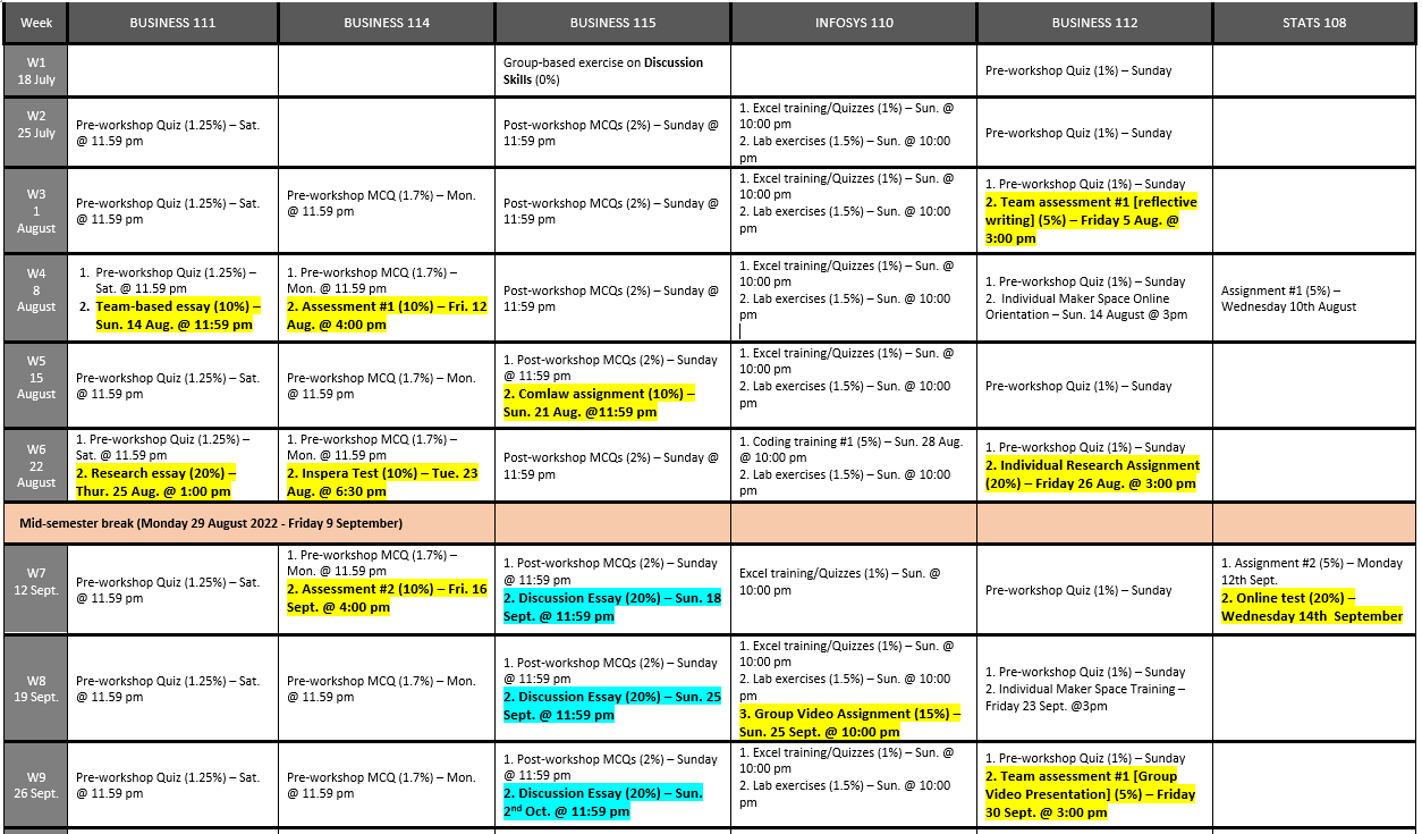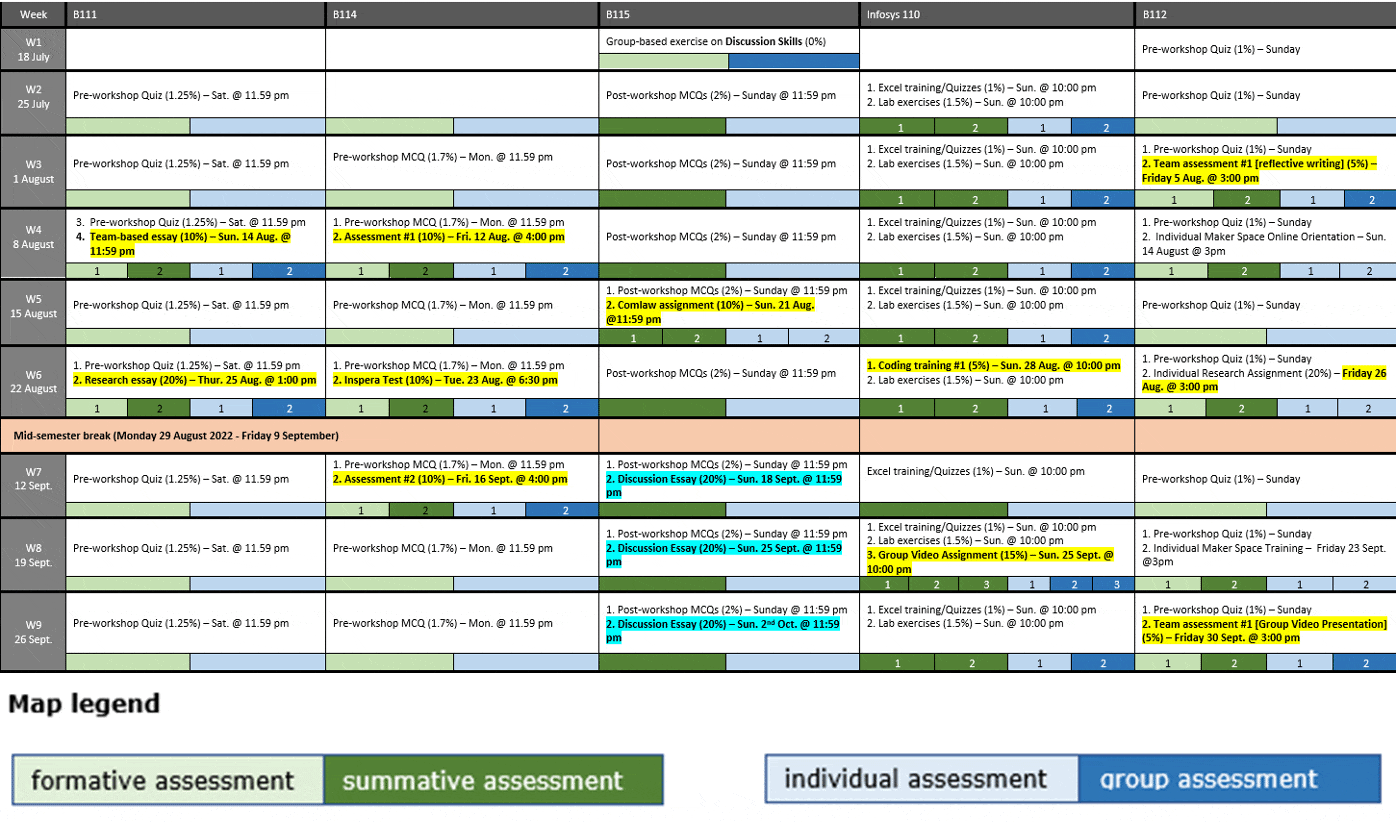Curriculum mapping in Business and Economics’ first-year undergraduate core courses
Use curriculum mapping to maintain coherence across an interdisciplinary core and create a consistent student experience.
The revised undergraduate programme in Business and Economics encompasses different disciplines, so it was important to plan it from a curriculum design perspective to ensure that the delivery of the curriculum is perceived as one package, from both a teacher perspective and from a student perspective, and to ensure an even coverage of assessment workload. To help with this planning, a series of curriculum maps were developed to map disciplinary content, academic and professional skills, graduate profile alignment and assessment across the courses involved.

In 2020, the Faculty of Business and Economics introduced a new core for their undergrad programmes – the Bachelor of Commerce (BCom) and the Bachelor of Property (BProp). The new core comprises six courses in Year 1, one in Year 2, and a capstone course in Year 3. Dr Nabeel Albashiry, a Curriculum Design Manager (CDM) in the Faculty, has been working iteratively with the stakeholders on curriculum mapping across the new core courses. This example focuses on the curriculum mapping of the Year-1 courses.
The revised core programme is interdisciplinary, and it requires the development of a set of academic and professional skills, especially in Year 1. Therefore, it was critical to map the disciplinary content and skills across the core courses to ensure that all skills are covered across the programme and the curriculum delivery is perceived as one package from both teacher and student perspectives.
Nabeel created several curriculum maps to help the course design teams develop and deliver a coherent and integrated programme.1
1) Disciplinary content map
This is a simple matrix used to indicate where each discipline is covered. The screenshot below indicates what and where Commercial Law topics (one of the disciplines) are covered in Year-1 core courses.
Table 1. A list of learning outcomes across the Commercial Law programme, alongside the courses where the skills are taught.
2) Academic and professional skills map
This curriculum heat map was created to ensure that the target academic and professional skills in the Year-1 core curriculum are captured and mapped across the core courses.
The BCom graduate profile (the first column) was used as a framework to align and classify the target academic and professional skills. Each skill in the second column has two rows – a ‘T’ and an ‘A’. The ‘T’ stands for ’Taught’, and the ‘A’ stands for ‘Assessed’. The curriculum map has a legend and an example to explain the mapping process to avoid a mere tick-the-box exercise. Annotations are used to identify where/how the skills are addressed and/or assessed.
Table 2. The graduate profile capabilities, mapped to courses that provide tasks or resources that develop these skills.
3) The graduate profile alignment map
This curriculum map shows the alignment of the Year-1 core courses with the graduate profile capabilities. The curriculum map also highlights key components of the digital course outline for each course, i.e., course prescription, course learning outcomes, and assessment information. Having these components in juxtaposition enables the academics and other stakeholders to see alignment between these alignments. It also helps to see the assessment structures, weightings, and types across the core courses to check for aspects such as the variety of assessments and compliance with the University assessment policy and the strategic intentions of the core curriculum.
Table 3. The graduate profile capabilities, mapped to the learning objectives of courses within the Bachelor of Commerce programme.
4) The holistic assessment map
This map aims to highlight where the main assessment tasks and submission dates/timelines are in the semester to ensure an even spread of assignments and avoid students being overloaded in a certain week.
Table 4. The teaching weeks, aligned with each course, highlighting where the assessments tasks and submission deadlines are in the semester to ensure an even spread.
The assessment map also highlights, on another page, formative vs summative and group vs individual assessments. This is to guide assessment design within each course and holistically across the core courses.
Table 5. The teaching weeks, aligned with each course, highlighting formative vs summative and group vs individual assessments.
These curriculum maps are designed to enable each core course design team to reflect on their course design from different angles and consider how their course needs to complement the other core course to realise a coherent core curriculum.
Curriculum mapping has been an iterative and work-in-progress process since it was launched. It has helped the academics involved, CDMs, learning designers, and other stakeholders to identify skill gaps and design the core curriculum holistically. It has also highlighted where learning design support might be needed to develop certain types of assessments or scaffolding activities.
The gains are evident, and the practice is completed in other programmes in the Business School to varying degrees.
- These maps reflect the previous capabilities and will be updated in 2023. ↩

